| Pages:
1
2
3
..
6 |
Quantum_Dom
Hazard to Self
 
Posts: 88
Registered: 23-6-2008
Member Is Offline
Mood: Entangled
|
|
Improvement in the yield of racemic PPA*HCl via Akabori reaction (35 % molar)
This thread is dedicated to those who do desktop research and solely base theyre argument on theory. It is also dedicated to my good friend and
colleague Xtaldoc.
This subject is a favorite of mine. It’s a very nice (and hard) problem to tackle. Such an elegant and OTC mean of obtaining racemic
phenylpropanolamine (PPA) and yet so many obstacles and problems regarding proper work-up, understanding of the overall mechanism or the nature of the
byproduct formation. Not to mention a less than respectable reported molar yield of 15 % in average! I spent a lot of time studying and trying to
tweak the reaction protocol and finally I am very happy to report a 35 % molar yield of racemic PPA*HCl (based on alanine). I apologize to the
moderators for opening a new thread in advance but I figured the previous one was rather old and convoluted. Feel free to merge it with the old one if
its not worthy of a new thread.
This has been discussed over and over at many different sites and I am sure you are well aware of it. This is why I will solely base my post on the
Cycloknight's thread [1] as I believe it is the most complete and up to date on the subject. Furthermore, my improved work-up and yield is directly
inspired and based on CycloKnight’s write-up, the Yokoyama et al. article [2] and some comments that Nicodem made in the Cycloknight's thread [3].
Before I get to the actual protocol I need to make a few remarks which will make (I hope) the various steps in my procedure more transparent and
justifiable.
1-Lots of people are arguing that the only compound obtained in this procedure is 1,2-diphenylethanolamine (DPEA) quoting this study and affirming that no PPA is obtained at all. DPEA is indeed the major product but it is easily removed in the work-up. The reason the
authors are not isolating any PPA is mainly due to 1) the very little scale theyre working on (amount of PPA is almost insignificant at this scale),
2) they are omitting to concentrate the aqueous phase extracts in the work-up (the latter contains PPA*HCl). This will be re-explained later and will
prove by the same occasion that referring to that article, to conclude that PPA is not in fact produced, is incorrect.
2-The Yokoyama article mentions that the stoechiometry of the reaction involves two moles of benzaldehyde; one for the formation of PPA and one that
condense with the latter to form an oxazolidine. The latter can further be hydrolyzed in the work-up, to regenerate PPA and benzaldehyde, by refluxing
the whole mixture, after the condensation/decarboxylation is over. A large excess of benzaldehyde (6 equivalents) is also needed to maximize yields.
3-An important point was made by Nicodem in the CycloKnight’s thread regarding the possibility of an acid-base reaction between alanine and PPA. PPA
being a base (primary amine) and alanine having a carboxylic acid moiety, it is not impossible for the two to combine and form a salt that will surely precipitate in benzaldehyde. This topic was discussed and illustrated by me and Naf1 at The Vespiary
[4]. Knowing that in CycloKnights work-up all solids after the decarboxylation are assumed to be unreacted alalnine, and therefore discarded, it is
normal to wonder if theyre is not actual PPA*alaninate thrown away at the same time.
It is basically on those last two points that I believe my work-up of the reaction is superior, cleaner and brings a better yield of clean racemic
PPA*HCl. Heres the protocol:
In a 1 L RBF, 358 g of benzaldehyde (3.36 moles) and 50 g of finely crushed DL-alanine (0.56 moles) were mixed together with magnetic stirring. It was
attached to a simple distillation setup and heated on an oil bath at 140 celsius for 3 hours [5] (Figure-1). No more CO2 was evolved from the flask at
this point and the color of the mixture was a deep burgundy (almost black). The flask was removed from the oil bath and let cool on its own for 20
minutes. Afterwards, 100 mL of 20 % AcOH in Toluene were added to the flask and the latter was stirred, at RT, for 20 minutes [6]. When this induction
period was over, 400 mL of 15 % HCl (aq) was added to the flask and the whole mixture was refluxed gently on the oil bath for 3 hours. Afterwards, the
pH of the mixture was verified to be strongly acidic. If not, small portions of concentrated HCl (aq) were added until it was and the mixture was
refluxed for another 30 minutes. The flask was then removed from the oil bath, the mixture left to cool for a bit and then rapidly separated with a
separation funnel while still warm [7] (Figure-2). An orange/red aqueous phase and a dark black organic phase were obtained [8] (Figure-3).
The aqueous phase was washed 3 times with 150 mL of DCM [9] (Figure-4). Then the volume of the aqueous phase was reduced, with gentle heating and
stirring, until half of the volume was vaporized [10] (Figure-5). The remaining aqueous phase was washed 3 other times with 75 mL DCM. The aqueous
phase was then treated with small portions of NaHCO3 [11] until fizzing becomes less violent (Figure-6), then small portions of NaOH were added until
pH was strongly alkaline. A light brown-yellow oily layer with a strong and biting amine smell separated from the aqueous phase (Figure-7). The latter
was separated and the aqueous phase was extracted 4 times with 200 mL DCM [12]. All the NP fractions were pooled together, washed 2 times with 100 mL
BRINE and the DCM was stripped off to afford a viscous brown oil that partially turns to a solid once cooled [13].
The oil was dissolved in 5 times its volume of dry acetone. Small portions of an 1:3 HCl (muriatic)-isopropanol solution were added until pH 4 was
reached [14]. Large amounts of crystalline material precipitated during the addition (Figure-8 and 9). The flask was put in the freezer overnight, the
crystalline material was vacuum filtered and washed with small portions of cold and dry acetone. 33.2 g of racemic PPA*HCl were obtained (Figure-10).
Evaporation of the acetone liquor afforded another 3 g after appropriate washing and drying. Melting point, after 1 week in the dessicator, was
131-136 0C [15]. The product gave a positive test to Chen’s reagent and to the nitrous acid test [16]. It has a very distinctive smell reminding of
crude benzoic acid [17].
[1] http://www.sciencemadness.org/talk/viewthread.php?tid=5979
[2] https://www.thevespiary.org/talk/index.php?action=dlattach;t...
[3] http://www.sciencemadness.org/talk/viewthread.php?tid=5979&a...
[4] https://www.thevespiary.org/talk/index.php/topic,714.0.html
[5] No changes were made to CycloKnights protocol except longer time for decarboxylation and higher amount of benzaldehyde used.
[6] Glacial acetic acid being soluble in toluene, this step was performed in order to protonate the oxazolidine dissolved in the excess benzaldehyde
and make it more prone to hydrolysis latter on. I have no evidence if this step is necessary but I was inspired by the Yokohama et al. article were it
is used.
[7] The two phases separate very cleanly while still warm ( 50-55 0C). If the phases are left to cool at RT, the whole mixture turns into a nasty
emulsion that wont separate and heating needs to be reapply to separate the phases.
[8] The aqueous phase contains PPA salts, DPEA salts and other water soluble impurities. The NP layer contains a large amount of tar and lots of
unreacted benzaldehyde which can be vacuum-distilled later on by firstly washing a few times with diluted aqueous sodium carbonate the NP layer.
[9] This steps is really important as it removes most of the DPEA salts, chloroform is also equally good.
[10] This step is crucial as PPA freebase is soluble in water and will therefore allow one to maximize extraction efficiency once the freebase will be
released. An Erlenmeyer or a large flask with a neck is recommended here to minimize aerosol lost. Do not bring the solution to a boil either. The
temperature was 80-85 0C and it took roughly 5 hours for evaporation. Evaporation under vacuum would be of course ideal.
[11] The resulting aqueous solution being strongly acidic, the use of sodium bicarbonate allows for smoother neutralization of the excess acid (less
heat is generated). Also, a greater amount of salt will be present in the solution and will force the PPA freebase to separate more efficiently.
[12] Do not dry the DCM fraction with magnesium sulfate as a gelatinous addition complex is obtained.
[13] This is mostly due to the fact that the oil is a mixture of 4 different isomers with different melting points.
http://www.thevespiary.org/rhodium/Rhodium/chemistry/nor-pse...
[14] Gassing is not recommended here to claim the hydrochloride.
http://www.thevespiary.org/rhodium/Rhodium/chemistry/nor-pse...
[15] Reported melting point: 134-137°C (butanol-ether (50:50 v/v))
http://www.thevespiary.org/rhodium/Rhodium/chemistry/nor-pse...
[16] Chen’s reagent is specific for alpha-hydroxy amines such as (pseudo)ephedrine and PPA’s. Nitrous acid test indicates a primary amine.
[17] PHENYLPROPANOLAMINE HYDROCHLORIDE, ANALYTICAL PROFILES OF DRUG SUBSTANCES VOLUME 12, Isadore Kanfer, John M. Haigh, and Roslind Dowse
Please post any comments, critique and/or interrogations. I would love to discuss it with anyone interested in
optimizing yields furthermore or reproducing my results.- QD
Figure-1
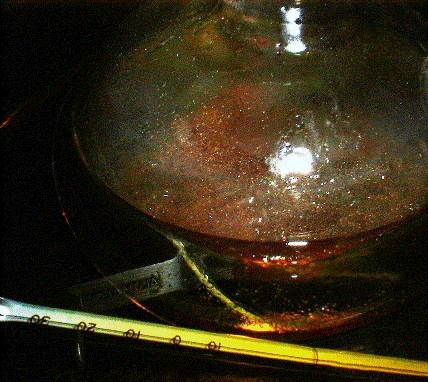
Figure-2
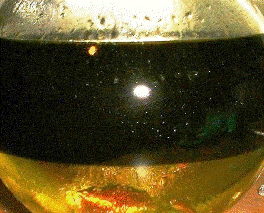
Figure-3
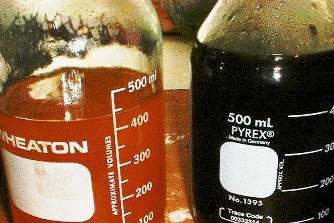
Figure-4
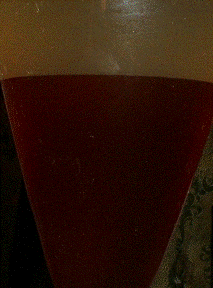
Figure-5
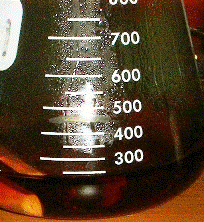
Figure-6
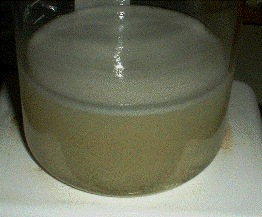
Figure-7
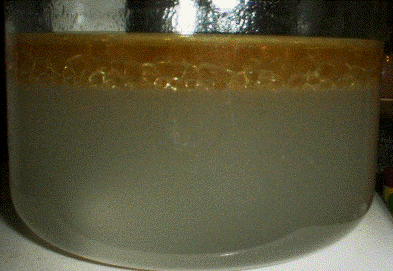
Figure-8
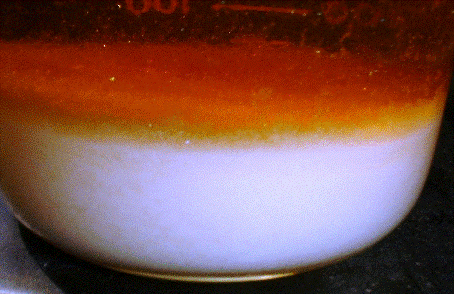
Figure-9
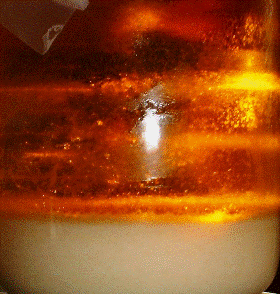
Figure-10
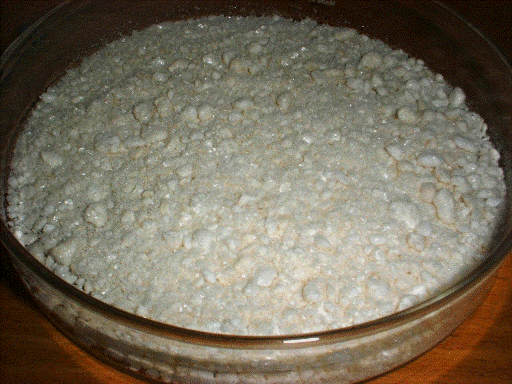
[Edited on 18-8-2010 by Quantum_Dom]
|
|
|
Methyl.Magic
Hazard to Others
  
Posts: 139
Registered: 14-5-2007
Member Is Offline
Mood: No Mood
|
|
Very nice work thanks 
The report is complete and very instructive. The methods, especially the workup seems better than Cycloknight version.
i'll try this next week with pictures !
bye
|
|
|
Quantum_Dom
Hazard to Self
 
Posts: 88
Registered: 23-6-2008
Member Is Offline
Mood: Entangled
|
|
Quote: Originally posted by Methyl.Magic  | Very nice work thanks 
The report is complete and very instructive. The methods, especially the workup seems better than Cycloknight version.
i'll try this next week with pictures !
bye |
Thank you Methyl ! Cant wait to hear your results. Please if unsure about
something, feel free to PM or ask in this thread at any time Cant wait to hear your results. Please if unsure about
something, feel free to PM or ask in this thread at any time  . .
|
|
|
DDTea
National Hazard
   
Posts: 940
Registered: 25-2-2003
Location: Freedomland
Member Is Offline
Mood: Degenerate
|
|
I have an idea for how you could improve this; well, not so much as improving the yield, but in experimental design. I'm new to this topic, so I
haven't had a chance to read through all of your references yet:
One of your suggestions is that a portion of your product reacts with benzoic acid in solution to form a Phenyl Propanolamine-Benzoate salt.
What would be more interesting is if you could compare the physical properties of the products of two reactions: one with an unmodified protocol with
the low yields, and the second where you save ONLY the product from extracting the precipated solids. A direct comparison of the two would either
support or disprove the claim that these two portions are the same compound and that this new protocol actually improves the yield of the reaction.
"In the end the proud scientist or philosopher who cannot be bothered to make his thought accessible has no choice but to retire to the heights in
which dwell the Great Misunderstood and the Great Ignored, there to rail in Olympic superiority at the folly of mankind." - Reginald Kapp.
|
|
|
Quantum_Dom
Hazard to Self
 
Posts: 88
Registered: 23-6-2008
Member Is Offline
Mood: Entangled
|
|
Quote: Originally posted by DDTea  |
One of your suggestions is that a portion of your product reacts with benzoic acid in solution to form a Phenyl Propanolamine-Benzoate salt.
|
Actually no, if what Nicodem's proposed is occuring, the PPA molecule would react with the carboxylic moiety on alanine to generate an Alaninate salt.
No benzoic acid is involved at all.
http://img517.imageshack.us/img517/4269/ppaalaninate2.gif
Quote: Originally posted by DDTea  |
What would be more interesting is if you could compare the physical properties of the products of two reactions: one with an unmodified protocol with
the low yields, and the second where you save ONLY the product from extracting the precipated solids. A direct comparison of the two would either
support or disprove the claim that these two portions are the same compound and that this new protocol actually improves the yield of the reaction.
|
Well I did ran the reaction previously according to the classical write-up and can assure you that yields are greatly improved. But, it might also be
due to the excess benzaldehyde and the hydrolysis work-up as well.
[Edited on 18-8-2010 by Quantum_Dom]
|
|
|
DDTea
National Hazard
   
Posts: 940
Registered: 25-2-2003
Location: Freedomland
Member Is Offline
Mood: Degenerate
|
|
Sorry I goofed; I meant the alaninate salt.
What I'm asking is that how do you *know* it is, in fact, an alaninate salt and not unreacted alanine that is left over after the reaction? It would
be interesting to see you do the nitrous acid test, Chen's test, and melting point on only the proposed PPA liberated from the alaninate salt. Then a
comparison to a PPA reference, i.e. that product of an unmodified protocol, would support the claim that there actually is PPA bound to unreacted
alanine that would otherwise be discarded without your modified protocol.
Also you state, "PPA being a base (primary amine) and alanine having a carboxylic acid moiety, it is not impossible for the two to combine and form a
salt that will surely precipitate in benzaldehyde." Now an interesting question is, "How soluble is PPA*Alaninate in benzaldehyde?"
"In the end the proud scientist or philosopher who cannot be bothered to make his thought accessible has no choice but to retire to the heights in
which dwell the Great Misunderstood and the Great Ignored, there to rail in Olympic superiority at the folly of mankind." - Reginald Kapp.
|
|
|
Quantum_Dom
Hazard to Self
 
Posts: 88
Registered: 23-6-2008
Member Is Offline
Mood: Entangled
|
|
Quote: Originally posted by DDTea  | Sorry I goofed; I meant the alaninate salt.
What I'm asking is that how do you *know* it is, in fact, an alaninate salt and not unreacted alanine that is left over after the reaction?
|
Ah ok I see your point now. Well I dont know if the alaninate salt formation its
occuring BUT if it is occuring people previously were tossing it out as garbage! My work-up does not discriminates on this, if its only alanine it
goes in aqueous extracts and stays there. If there is PPA*Alaninate, it goes as well in the aqueous extracts but the freebase is eventually liberated
and isolated. Well I dont know if the alaninate salt formation its
occuring BUT if it is occuring people previously were tossing it out as garbage! My work-up does not discriminates on this, if its only alanine it
goes in aqueous extracts and stays there. If there is PPA*Alaninate, it goes as well in the aqueous extracts but the freebase is eventually liberated
and isolated.
Not a clue ! But being a strongly ionic specie, common sense would lead one to believe that benzaldehyde couldnt solvate it and if it does slightly,
the salt will preferentially go into the water extracts anyways.
[Edited on 18-8-2010 by Quantum_Dom]
|
|
|
DDTea
National Hazard
   
Posts: 940
Registered: 25-2-2003
Location: Freedomland
Member Is Offline
Mood: Degenerate
|
|
Quote: Originally posted by Quantum_Dom  |
Ah ok I see your point now. Well I dont know if the alaninate salt formation its
occuring BUT if it is occuring people previously were tossing it out as garbage! My work-up does not discriminates on this, if its only alanine it
goes in aqueous extracts and stays there. If there is PPA*Alaninate, it goes as well in the aqueous extracts but the freebase is eventually liberated
and isolated. Well I dont know if the alaninate salt formation its
occuring BUT if it is occuring people previously were tossing it out as garbage! My work-up does not discriminates on this, if its only alanine it
goes in aqueous extracts and stays there. If there is PPA*Alaninate, it goes as well in the aqueous extracts but the freebase is eventually liberated
and isolated.
Not a clue ! But being a strongly ionic specie, common sense would lead one to believe that benzaldehyde couldnt solvate it.
[Edited on 18-8-2010 by Quantum_Dom] |
So, the burden of proof is still on you to show this information experimentally! 
We need to see numbers and confirmation. Assumption isn't enough. Don't forget, that C=O bond in Benzaldehyde has a strong dipole moment, so common
sense isn't enough.
"In the end the proud scientist or philosopher who cannot be bothered to make his thought accessible has no choice but to retire to the heights in
which dwell the Great Misunderstood and the Great Ignored, there to rail in Olympic superiority at the folly of mankind." - Reginald Kapp.
|
|
|
Quantum_Dom
Hazard to Self
 
Posts: 88
Registered: 23-6-2008
Member Is Offline
Mood: Entangled
|
|
Quote: Originally posted by DDTea  |
So, the burden of proof is still on you to show this information experimentally! 
We need to see numbers and confirmation. Assumption isn't enough. Don't forget, that C=O bond in Benzaldehyde has a strong dipole moment, so common
sense isn't enough. |
Well I hardly see where you coming from with all this as I never actually stated that I proved the PPA*alaninate was actually forming. I think you
misunderstood here. All Im saying is that if it is forming, Im taking the means to recover it thats all.
Making assumptions and hypothesis is part of the scientific method too you know. Also, Im affraid you cant atribute the solvent efficiency of a
compound by simply looking at one of its functional group. The elementary rule "likes dissolve likes" might bee good for elementary college chemistry
but its far from being an absolute.
[Edited on 18-8-2010 by Quantum_Dom]
|
|
|
DDTea
National Hazard
   
Posts: 940
Registered: 25-2-2003
Location: Freedomland
Member Is Offline
Mood: Degenerate
|
|
Quote: Originally posted by Quantum_Dom  | Quote: Originally posted by DDTea  |
So, the burden of proof is still on you to show this information experimentally! 
We need to see numbers and confirmation. Assumption isn't enough. Don't forget, that C=O bond in Benzaldehyde has a strong dipole moment, so common
sense isn't enough. |
Well I hardly see where you coming from with all this as I never actually stated that I proved the PPA*alaninate was actually forming. I think you
misunderstood here. All Im saying is that if it is forming, Im taking the means to recover it thats all.
Making assumptions and hypothesis is part of the scientific method too you know. Also, Im affraid you cant atribute the solvent efficiency of a
compound by simply looking at one of its functional group. The elementary rule "likes dissolve likes" might bee good for elementary college chemistry
but its far from being an absolute.
[Edited on 18-8-2010 by Quantum_Dom] |
If you're not sure that PPA*alaninate is being formed, then how can you say that recovering the mystery precipitate is improving the yield and not
just contaminating your product?
Yes, assumptions and hypothesis are part of the scientific method, but so is questioning results and eliminating sources of confoundment.
No, "like dissolves like" is not an absolute, which is why I'd like to see a measurement. If you can say, "Only a negligible amount of
PPA*Alaninate dissolves in benzaldehyde at X *C (whatever the temperature of the benzaldehyde is in this reaction) (reference to data showing
solubility)," then that carries more weight than simply saying, "[it] will surely precipitate in benzaldehyde."
Your work is good and interesting, but I still see unanswered questions that need to be addressed.
"In the end the proud scientist or philosopher who cannot be bothered to make his thought accessible has no choice but to retire to the heights in
which dwell the Great Misunderstood and the Great Ignored, there to rail in Olympic superiority at the folly of mankind." - Reginald Kapp.
|
|
|
Quantum_Dom
Hazard to Self
 
Posts: 88
Registered: 23-6-2008
Member Is Offline
Mood: Entangled
|
|
Quote: Originally posted by DDTea  |
If you're not sure that PPA*alaninate is being formed, then how can you say that recovering the mystery precipitate is improving the yield and not
just contaminating your product?
|
Did you actually read my post ? I suggest you restart again. Theyres other variables that I have changed from the original write-up. You wont find a
single sentence where Im affirming that better yields are obtained because of the extraction of a POSSIBLE PPA*Alaninate. None.
My product was carachterized to a certain extent with physical properties that agreed with the litterature. No I do not have access to NMR or GC/MS.
I dont mind defending my work to youre criticism but as a form of respect you should at least read the post entirely. You admited not so long ago that
you didnt even do that. Not very rational. Seems to me that even If I would break down the process quantum mechanically you would still argue. So I
guess youll have to take what I give you or otherwise refute my work if you are such an authority.
|
|
|
DDTea
National Hazard
   
Posts: 940
Registered: 25-2-2003
Location: Freedomland
Member Is Offline
Mood: Degenerate
|
|
Quote: Originally posted by Quantum_Dom  | Quote: Originally posted by DDTea  |
If you're not sure that PPA*alaninate is being formed, then how can you say that recovering the mystery precipitate is improving the yield and not
just contaminating your product?
|
Did you actually read my post ? I suggest you restart again. Theyres other variables that I have changed from the original write-up. You wont find a
single sentence where Im affirming that better yields are obtained because of the extraction of a POSSIBLE PPA*Alaninate. None.
My product was carachterized to a certain extent with physical properties that agreed with the litterature. No I do not have access to NMR or GC/MS.
I dont mind defending my work to youre criticism but as a form of respect you should at least read the post entirely. You admited not so long ago that
you didnt even do that. Not very rational. Seems to me that even If I would break down the process quantum mechanically you would still argue. So I
guess youll have to take what I give you or otherwise refute my work if you are such an authority.
|
You're really touchy. I'm not attacking you personally, just chill out and address the points at hand. You asked for criticism, so I'm pointing out
things that you're not adequately addressing--things that would make this whole write-up a lot stronger than it currently is.
You don't need NMR or GC/MS to determine the structure and quantum mechanics isn't so important here. What you DO need is good experimental design.
You DID say this:
| Quote: |
It is basically on those last two points that I believe my work-up of the reaction is superior, cleaner and brings a better yield of clean racemic
PPA*HCl. Heres the protocol |
One of those last two points was the issue of recovering PPA from supposed PPA*Alaninate. If you can't clearly show that what you are recovering is,
in fact, PPA, then you cannot show that your reaction is "cleaner"--because you may well have a contaminated product.
It's not enough to simply believe your work-up is superior, cleaner, and brings a better yield of clean racemic PPA*HCl. You have to prove it, which
you did not.
Another suggestion: why would you change so many variables in a single run? Why not show how each one, independently, affects the yield so that
every change can be quantified?
Maybe if you drew a tree diagram of the steps of your work-up that shows what you expect is in the portions you save and the portions you discard,
this would be even clearer. Something quick in MS Paint would suffice.
[Edited on 8-18-10 by DDTea]
"In the end the proud scientist or philosopher who cannot be bothered to make his thought accessible has no choice but to retire to the heights in
which dwell the Great Misunderstood and the Great Ignored, there to rail in Olympic superiority at the folly of mankind." - Reginald Kapp.
|
|
|
Quantum_Dom
Hazard to Self
 
Posts: 88
Registered: 23-6-2008
Member Is Offline
Mood: Entangled
|
|
| Quote: |
You're really touchy. I'm not attacking you personally, just chill out and address the points at hand.You asked for criticism, so I'm pointing out
things that you're not adequately addressing
|
Oh Im pefectly calm good sir. I just dont argue for the sake of arguing, its a waste of time thats all. You were rather deforming and misquoting what
I was stating while bluntly admitting along the way you were unfamiliar with the topic and havent read the entire thread. Its a little disrespectful,
thats all. I took the time to organize a proper timeline and joined many references so that the least one who wants to criticize has to do is fully
analyze whats at stake first.
| Quote: |
You don't need NMR or GC/MS to determine the structure
|
what do you need then to caractherize a structure ? Other options are brute-force physical carachteristics. Surely you were not implying assumption
and deduction, that would be incomplete and unscientific as you stated earlier.
| Quote: |
What you DO need is good experimental design.
|
Theyres always room for improvement I agree and looking forward to.
| Quote: |
You DID say this:
It is basically on those last two points that I believe my work-up of the reaction is superior, cleaner and brings a better yield of clean racemic
PPA*HCl. Heres the protocol[/rquote]
One of those last two points was the issue of recovering PPA from supposed PPA*Alaninate. If you can't clearly show that what you are recovering is,
in fact, PPA, then you cannot show that your reaction is "cleaner"--because you may well have a contaminated product.
|
Im fairly sure I provided enough evidence based on previous studies and reports that my product is clean and well carachterize. Is it ACS reagent
grade ? I doubt it. You seem to stick to the notion that the point of this experiment was to prove that a PPA*alaninate was actually generated and
recuperating it is the whole reason why yields are greater. If it were, I would actually have tried to isolate the damn thing instead of going through
all that trouble dont you think ?
I used the terms "basically" and "possibility" meaning that I had no proof whatsoever to affirm that it was one of the variable or all the
variables that increased the yield and yes...give a cleaner product (maybe you should have a look at the previous thread I was quoting and
then youll understand the purpose of the adjective cleaner in this context).
| Quote: |
It's not enough to simply believe your work-up is superior, cleaner, and brings a better yield of clean racemic PPA*HCl. You have to prove it, which
you did not.
|
Of course I did not...according to you. You are actually incapable of giving a single argument on why I failed to do so.
| Quote: |
Another suggestion: why would you change so many variables in a single run? Why not show how each one, independently, affects the yield so that every
change can be quantified?
|
Because the purpose of this experiment was to increase the yield of PPA*HCl period. It was never meant to be a kinetic study of alaninate salts
formation in Benzaldehyde or the partition coefficient determination of aminoalcohols. All succeptible modifications were considered at the same time
to maximize the probability of PPA isolation.
| Quote: |
Maybe if you drew a tree diagram of the steps of your work-up that shows what you expect is in the portions you save and the portions you discard,
this would be even clearer. Something quick in MS Paint would suffice.
|
Again I hardly see where you getting at. I admit product isolation can sometimes be synonymous with art but the substrate at stake here does not even
come close to require such a scheme IMO. Thanks for the suggestion though.
[Edited on 18-8-2010 by Quantum_Dom]
|
|
|
Globey
Hazard to Others
  
Posts: 183
Registered: 9-2-2009
Member Is Offline
Mood: No Mood
|
|
Totally awesome job!!!
|
|
|
12332123
Harmless

Posts: 38
Registered: 14-11-2009
Member Is Offline
Mood: No Mood
|
|
This is really great, but could you please quickly clarify something for me? When you say you used a 1:3 HCl soln in isopropyl alcohol do you refer to
an anhydrous soln of the gas or a simple mixture of concentrated acid and alcohol?
|
|
|
Quantum_Dom
Hazard to Self
 
Posts: 88
Registered: 23-6-2008
Member Is Offline
Mood: Entangled
|
|
Quote: Originally posted by 12332123  | | This is really great, but could you please quickly clarify something for me? When you say you used a 1:3 HCl soln in isopropyl alcohol do you refer to
an anhydrous soln of the gas or a simple mixture of concentrated acid and alcohol? |
No, I used 1 part muriatic acid to 3 parts IPA.
|
|
|
Ephoton
Hazard to Others
  
Posts: 463
Registered: 21-7-2005
Member Is Offline
Mood: trying to figure out why I need a dark room retreat when I live in a forest of wattle.
|
|
hmmm goodbye darzen 
e3500 console login: root
bash-2.05#
|
|
|
Quantum_Dom
Hazard to Self
 
Posts: 88
Registered: 23-6-2008
Member Is Offline
Mood: Entangled
|
|
LOL why ? Yield-wise I doubt the procedure with deactivated benzaldehydes will ever be viable, even with N-methylated amino acids. Its just fun to
tackle as a challenge and so should be working with the Darzen  . .
[Edited on 20-8-2010 by Quantum_Dom]
|
|
|
Melgar
Anti-Spam Agent
    
Posts: 2004
Registered: 23-2-2010
Location: Connecticut
Member Is Offline
Mood: Estrified
|
|
Awesome! I can see QD's annoyance at arguing on the same topic over and over based on what is a fairly trivial part of the reaction. I had to do
that recently with a professor who kept insisting that because I didn't know the exact reaction mechanism at one point of a reaction, then clearly I
had no clue what I was doing. Never mind all my proof that the synthesis worked.
I'm curious as to whether anyone here has worked with ion-exchange resin. It can be very effective at separating ions from everything else, and could
potentially pull all the amines out of an aqueous solution with very good yields. Since three or four different amines are produced with this
reaction, it may not be that valuable, but could be helpful for cleanup at the end.
|
|
|
Quantum_Dom
Hazard to Self
 
Posts: 88
Registered: 23-6-2008
Member Is Offline
Mood: Entangled
|
|
Quote: Originally posted by Melgar  | | Awesome! I can see QD's annoyance at arguing on the same topic over and over based on what is a fairly trivial part of the reaction. I had to do
that recently with a professor who kept insisting that because I didn't know the exact reaction mechanism at one point of a reaction, then clearly I
had no clue what I was doing. Never mind all my proof that the synthesis worked. |
Haha, yes I know that feeling all too well. I must admit I was a little tired and impatient on the day I exchanged with DDTea and later apologized via
U2U for being harsh. 
Quote: Originally posted by Melgar  |
I'm curious as to whether anyone here has worked with ion-exchange resin. It can be very effective at separating ions from everything else, and could
potentially pull all the amines out of an aqueous solution with very good yields. Since three or four different amines are produced with this
reaction, it may not be that valuable, but could be helpful for cleanup at the end. |
Good point. I would love to have a more detailed report on what exactly constitutes the mixture after the condensation/decarboxylation step. One thing
I noticed and didnt talked about in my original post is that the benzylamine formation seemed to be fairly reduced as the distillate recovered was
essentially colorless and transparent and didnt had that yellow-red tone than previous runs where lower equivalents of benzaldehyde was used. It could
still have been trapped and failed to carry over so of course its purely speculative.
[Edited on 24-8-2010 by Quantum_Dom]
|
|
|
percholator
Harmless

Posts: 5
Registered: 20-7-2010
Member Is Offline
Mood: No Mood
|
|
alternative solvent to DCM or possible modification to workup?
Sorry, a bit of a novice here. (And sorry if a bit off topic)
For curiosity's sake, I was wondering if there might be a suitable alternative to DCM as a solvent for removing the DPEA in the workup (preferably
non-halogenated). Also, might it be possible to modify the workup to include centrifugation instead? Thanks in advance.
|
|
|
Quantum_Dom
Hazard to Self
 
Posts: 88
Registered: 23-6-2008
Member Is Offline
Mood: Entangled
|
|
Quote: Originally posted by percholator  | Sorry, a bit of a novice here. (And sorry if a bit off topic)
For curiosity's sake, I was wondering if there might be a suitable alternative to DCM as a solvent for removing the DPEA in the workup (preferably
non-halogenated). Also, might it be possible to modify the workup to include centrifugation instead? Thanks in advance. |
Well you could still use toluene to remove the benzaldehyde and other impurities in the acidic extract but an halogenated solvent is an absolute must
to remove DPEA*HCl (I dont know about Tetrachloroethylene). If you cant do that, youll need to freebase the amines and fractionally distill the PPA.
Perhaps an isolation exploiting respective solubilities could work too. I never tried. Why not try it and report back ?  . .
Youll need to explain in which part of the procedure youre considering centrifugation as I am not following you.
|
|
|
percholator
Harmless

Posts: 5
Registered: 20-7-2010
Member Is Offline
Mood: No Mood
|
|
Correct me if I'm wrong (I cannot easily find credible info on the BP of all amines formed), but it looks like PPA would be the first fraction to come
over and with decent margin of separation over the other fractions. Would there be any worries about thermal degradation of product? If so, to what
extent might this be a problem and how might the distillate be cleaned? Would multiple distillations be required for decent purity?
Please excuse my lack of knowledge, I am still very new to the hobby, and am just trying to familiarize myself with some concepts through specific
examples. I will try and find out the answers to these questions while I wait on a reply here. Thanks again 
|
|
|
percholator
Harmless

Posts: 5
Registered: 20-7-2010
Member Is Offline
Mood: No Mood
|
|
Sorry, forgot to include this, but in regards to the distillation of the freebase amines, I am more interested in conditions where it is carried out
under atmospheric pressures.
|
|
|
Quantum_Dom
Hazard to Self
 
Posts: 88
Registered: 23-6-2008
Member Is Offline
Mood: Entangled
|
|
Quote: Originally posted by percholator  | | Correct me if I'm wrong (I cannot easily find credible info on the BP of all amines formed), but it looks like PPA would be the first fraction to come
over and with decent margin of separation over the other fractions. Would there be any worries about thermal degradation of product? If so, to what
extent might this be a problem and how might the distillate be cleaned? Would multiple distillations be required for decent purity?
|
Yes youll need to have a reliable vacuum source to perform such a distillation and the racemic PPA fraction is the first one expected.
Quote: Originally posted by percholator  |
Please excuse my lack of knowledge, I am still very new to the hobby, and am just trying to familiarize myself with some concepts through specific
examples. I will try and find out the answers to these questions while I wait on a reply here. Thanks again  |
I see, no worries. We all have been there. But I would suggest you first educate yourself through general litterature and then consider specific
concepts.
QD
|
|
|
| Pages:
1
2
3
..
6 |